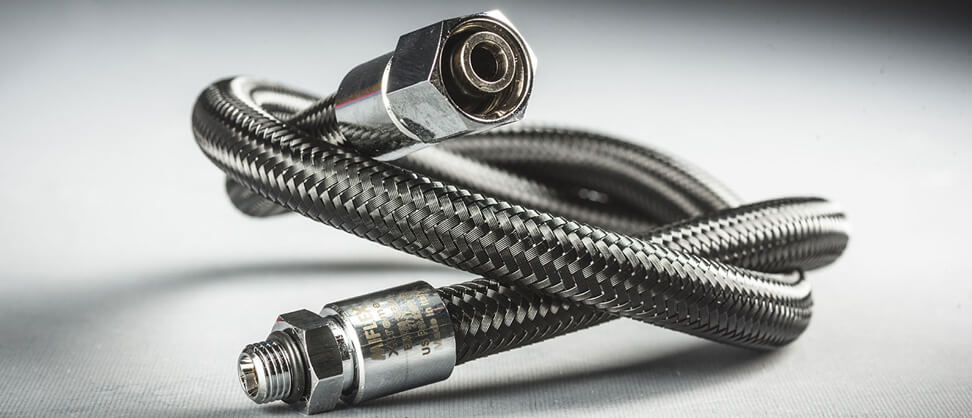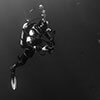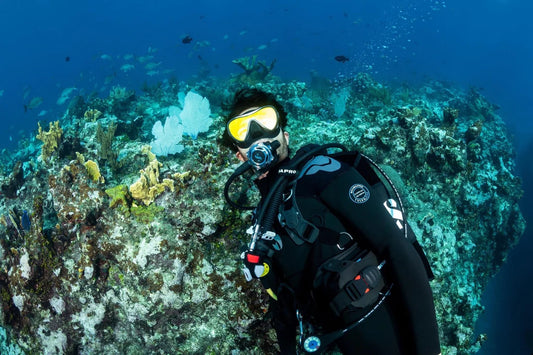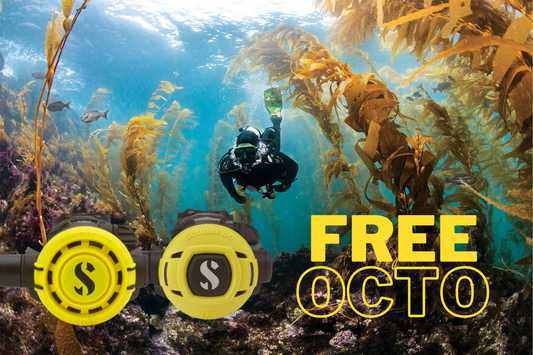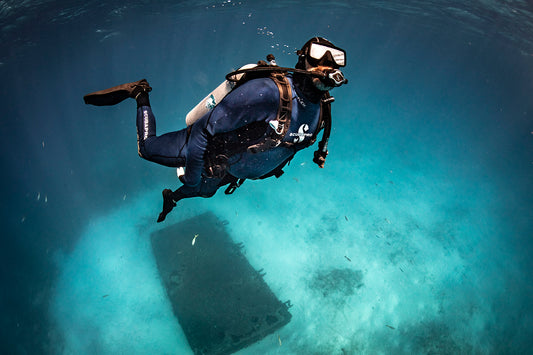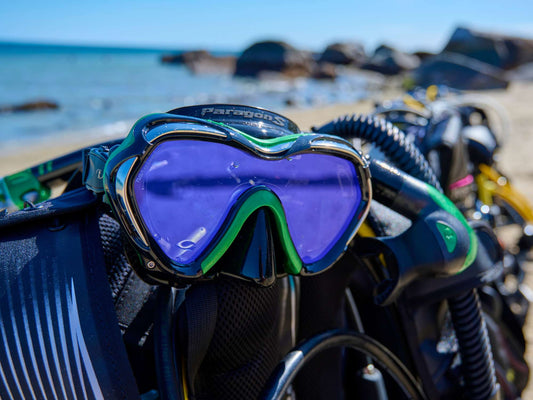Replacing the hoses on your regulator should be relatively easy job that most divers would happily do themselves but identifying which hose you need can sometimes be a little tricker.
For the most part regulators use two different fittings, one for low pressure supplied to the second stage and another for high pressure for contents gauges and transmitters, which prevents the wrong hose being inserted into the wrong port. Generally, low pressure uses a 3/8" threaded hose and high pressure uses a 7/16" hose. However, in their infinite wisdom, some manufacturers currently use or have used other sizes (most commonly a 1/2" port) for the low pressure side. Manufacturers tend to complicate things by naming certain low pressure ports as 'High Flow Ports' or something similar but all this is means is that these ports offer the most efficient gas flow path and has no bearing on the hose itself.
The other thing you'll need to decide upon is what type of hose you need. There are two options, the traditional rubber hose or the more modern braided hose. A good percentage of manufacturers already fit the modern braided hose for a variety reasons but some also continue to use rubber hoses for their own reasons. Scubapro, for instance, still uses a rubber hose as they believe their larger bore superflow hoses offer a performance benefit. Braided hoses, like the Miflex Hose range, have a lot of advantages over rubber hoses though. They are lighter, tougher, better flexibility, have a higher burst pressure for safety and have better resistance against UV and contaminant damage.
Whichever hose you get in the end it is important to remember that when fitting your new hose they should only be tightened to 5Nm of torque or, if you don't have a torque spanner to hand, just over hand tight. Any more than this and you risk crushing the o-ring seal and potentially striping the soft brass threads in the first stage.
First Stage Ports
Every first stage will have at least one high pressure port which is normally identifiable by the large size or 'HP' stamped into the body next to it and the hose itself only has a pinpoint hole to restrict air flow in the highly unlikely event of your high pressure hose rupturing. It will also have a number of low pressure ports (ranging from two to five) which will either be on the main body of the first stage or within a swivelling turret. Regulators that feature a 1/2" low pressure port will only have one of these ports which is intended for supplying the primary second stage (larger bore = better air flow).
If you are ever in doubt about what size fitting you need, simply measure it from thread crest to crest across the opening of the hose fitting.
High pressure swivel spool - These little components are essential in creating a sealing swivel on your pressure gauge and you absolutely need one. Pressure gauges already fitted to a hose already have a swivel spool fitted but if you buy a gauge by itself they rarely come with one so remember to get one. Divers fitting a wireless transmitter to a short length of high pressure hose will also need a high pressure swivel spool to properly seal the swivel connection.
Regulator First Stages that use 3/8"UNF Low Pressure Ports
- All current Apeks
- All current Aqua Lung
- All Cressi
- All Dive Rite
- All Oceanic
- All Scubapro
- All Seac Sub
- Mares 2S, 12S & 52 first Stages
Regulator First Stages that use a 1/2"UNF Low Pressure Port
- Some older Apeks
- Mares 22 first Stage
What Are The Standard Hose Lengths?
Replacement hoses are available in a wide range of lengths and, if you opt for a braided hose, a choice of colours as well. Whilst there is no restriction on what hose length you fit there are pros and cons to changing from the standard length. Fitting a longer hose adds flexibility and reduce strain but can cause kinks, increase drag and create snagging hazards. Fitting a shorter hose may make hose routing neater but potentially restricting freedom of movement.
For reference, the typical standard hose lengths are below but will vary from manufacturer to manufacturer and potentially even between sizes.
- Primary second stage - 75cm
- Alternate air source / octopus - 90cm standard, commonly changed for a 100cm
- BCD inflator hoses - 65cm
- Drysuit inflator hose - 75cm but will depend on routing
- Pressure gauges - 90cm
Safe Second Stages
Safe Second stages like the Scubapro Air2 and Atomic SS1 incorporate the octopus into the BCD inflator, getting rid of length of hose entirely and keeps your redundant second stage close to hand at all times. These units use a different quick disconnect to the one used on a normal inflator but the hose itself is the same as a regulator hose with the addition of an adapter on the end.
Of course there are a couple of different adapters so make sure you get the right one if you need to replace the hose / adapter.
- For the Apeks Octo Plus, SeaQuest AirSource (including 1, 2 and AirSource3 QD), Zeagle Octo-Plus, Aqualung Air Mic, Mares Air Control, Beauchat Venturi, US Divers Air Mic, Oceanic Air XS, Aeris AirLink and compatible BCDs.
- For the Scubapro Air II, Tusa Duo-Air, Sherwood Gemini, DiveRite RiteSource, H2Odyssea Inflator plus, Atomic Aquatics SS1 or Zeagle Octo-Z Breathable and compatible BCDs.
